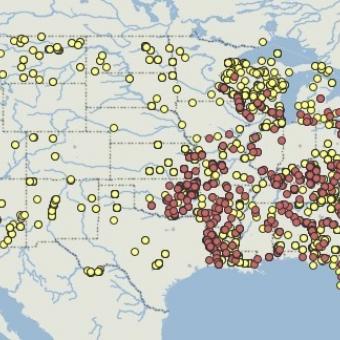|
Largemouth bass virus is a double stranded DNA virus that is associated with disease in largemouth bass, Micropterus salmonides. The virus is found in many species of fish but only causes mortality in largemouth bass. The virus, first discovered in 1991, has spread across the Eastern, Southern and Midwestern United States, but has has not been observed in introduced bass in Oregon. The virus causes few external symptoms but has the ability to cause large epizootics in the fish populations. Mortality from the virus is normally observed during the summer. Transmission of the virus takes place by direct fish-to-fish contact or by other fish feeding on a dead infected fish. The virus is not transmissable to humans and infected fish are safe to eat. |
|
Distribution:
Hosts: Many species of freshwater fish, but mortalities in largemouth bass
Central and Eastern USA
|
|
Detection Method:
cell culture - unspecified References: |







